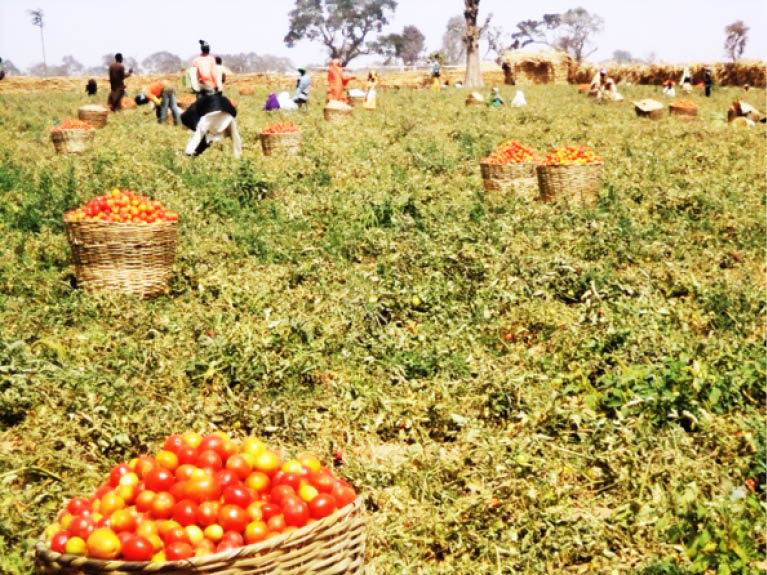AGRO SOLUTIONS – Tomato
Are you interested in producing Tomato? This is how Tomatoes can be produced across various types of soil. Numerous varieties are planted in temperate climate across the word, with backyard gardens, Green House and Tunnels allowing production throughout the year. The seed is the greatest inputs in tomatoes production; it determines the yield, performance, quality, […]

FILE PHOTO
Are you interested in producing Tomato? This is how
Tomatoes can be produced across various types of soil. Numerous varieties are planted in temperate climate across the word, with backyard gardens, Green House and Tunnels allowing production throughout the year.
The seed is the greatest inputs in tomatoes production; it determines the yield, performance, quality, return on investment for commercial growers and end users. Growers should use Hybrid seeds with some level of resistance to diseases and drought or hot conditions.
Production location and site should be opened to ventilation and direct access to sun even in Green House and Tunnels. Gardens should be well cleared and secured.
Tomatoes nursery should be raised in nursery trays using coco peat or peat moss medium. Fill the trays with the medium and plant one tomato seed in every hole. Irrigate and cover with plastic mulch for two days to break dormancy and subsequent germination. Seedling management will last for a period of 3-4 weeks before transplanting. Alternatively, nursery can be raised on a prepared beds of one meter wide using soil rich in organics materials by creating light furrows of 2cm depth on the beds, slightly plant the seed, cover with organic mulching, irrigate to germinate. Seedlings should be irrigated, hardened and managed until due for transplanting.
As seedlings are in the nursery, growers should commence land preparation, preparation of medium (soil rich organic material or soil) to fill sacks or flower pots ready for transplanting. Use strong sacks, preferably empty content bags that are very rugged and can last long for flowers pots.
This is done immediately seedlings are due in the nursery. Irrigate the prepared land or soil filled in bags and pots adequately and assembly them properly for good ventilation in the discretion of the sun. Transplanting is preferable in the evening or a cloudy rainy day to stabilize the newly seedlings against stress and mortality.
Here, growers attention is very important, because it is a critical stage and it is expected for growers to do the following:
• Irrigate 2-3 times in a week, not every day to avoid delay in growing and affect fruits performance.
• Regular weeding to avoid competition on nutrients and climate condition which will affect performance.
• Regular spray of pesticides and fungicides to manage vectors and disease.
• Fertilizes application at of 2-3 weeks. Preferably NPK 20:10:10
If growers notice any abnormality, call your Agronomist.
It is very important to raise the foliage of the plant for good quality fruits, proper exposure to aeration and maximum performance. Tomatoes mature between 65-85 days after transplanting depending on the variety. Harvesting is done by hand picking of ripe fruits that manifest yellow-red colors. Harvesting is done preferably using basket, not sacks because they cause damages to the tomatoes.
